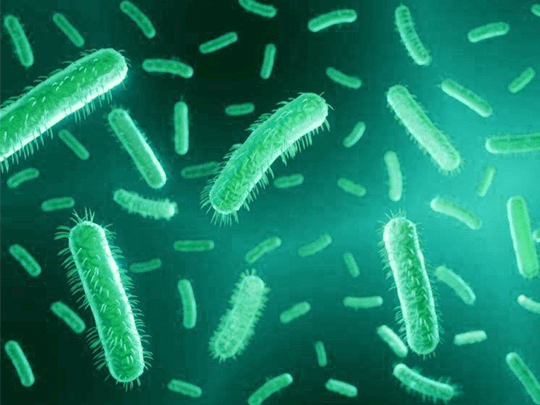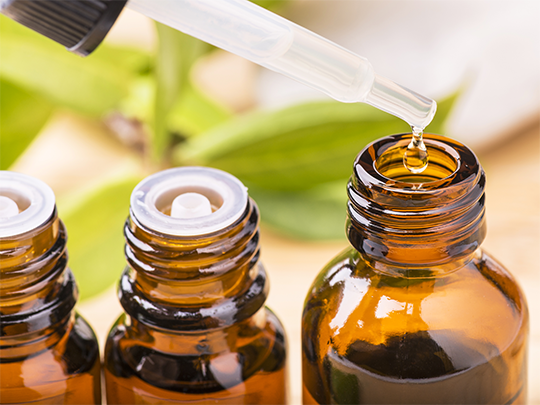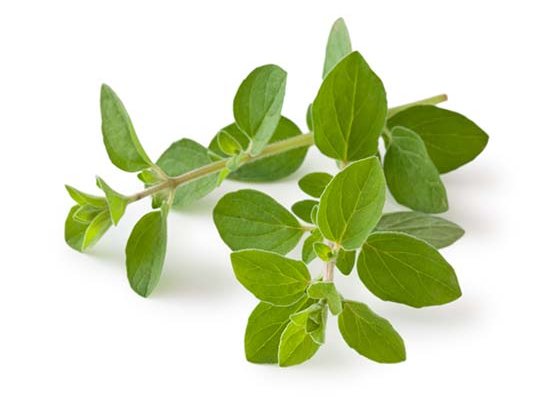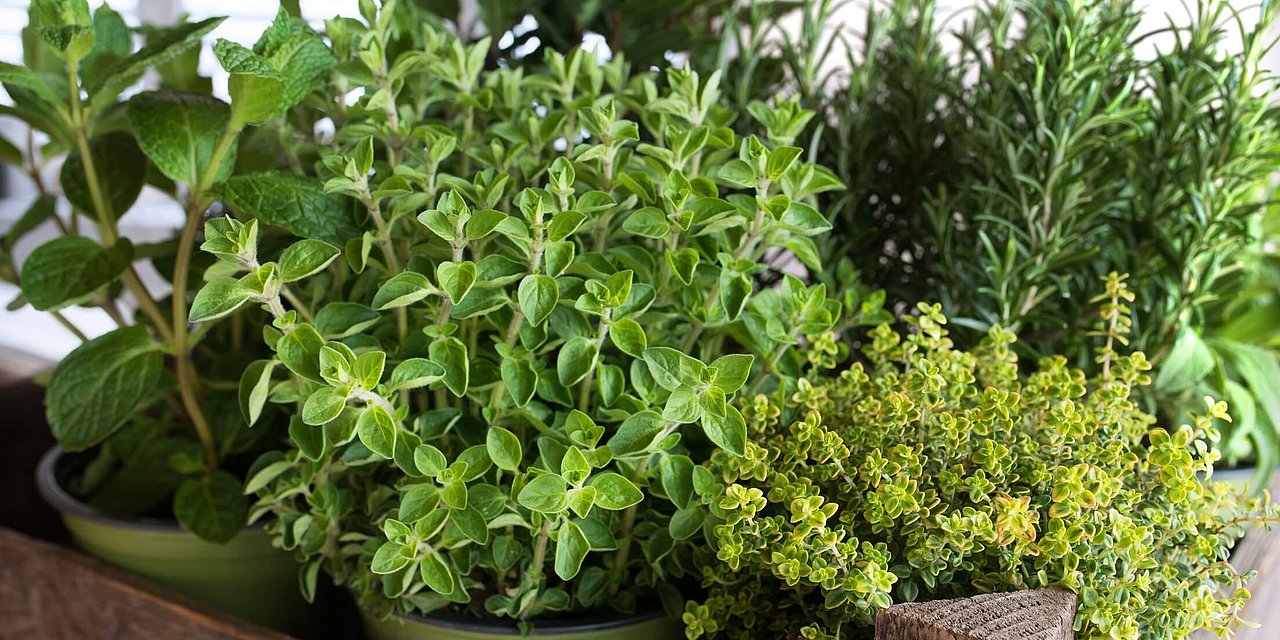Beneficial effects of two fantastic bio-actives: Thymol and Carvacrol - Part 2
Last time, we introduced Oregano to you, a spice plant – which probably is known to most of you, especially when it comes to the Mediterranean cuisine. In the first part we told you a little bit of its history and origin and gave first insights into its probably most important compounds: thymol and carvacrol. With part two we will have a closer look at these terpenoid natural substances and their antimicrobial and antioxidant activities.
Antimicrobial activity
Since the Sixties, thymol-rich essential oils have been evaluated for their possible benefits in medical applications. In these applications, its antimicrobial properties are one of the most studied areas.

Closely looked at
The antimicrobial action of phenolic compounds, such as thymol and carvacrol, are expected to cause structural and functional damages to the cytoplasmic membrane (11). The primary mode of antibacterial action of thymol is not fully known but is believed to involve outer and inner membrane disruption, and interaction with membrane proteins and intracellular targets.
Studies have shown that thymol and carvacrol interact with phospholipids within the cell membranes. These substances integrate at the polar head-group region of a lipid bilayer causing alterations to membrane fluidity. At low thymol concentrations, cells are able to induce adaptational changes in the membrane lipid profile to compensate for the fluidifying effects and to maintain the membrane function and structure (17, 18).
In this context, sub-lethal concentrations of carvacrol have been shown to change the fatty acid composition of the cytoplasmatic membrane in different microorganisms (E. coli O157:H7, S. typhimurium, Pseudomonas fluorescens, Brochothrix thermosphacta and S. aureus) by increasing the ratio of unsaturated fatty acids.
At high concentrations these substances directly affect membrane permeability and ultimately integrity, documented by a loss of membrane potential, and leakage of intracellular elements like different ions and adenosine triphosphate (ATP) (12, 13, 14, 15).
Interaction at several levels
In addition to interacting with membrane phospholipids, there is evidence of thymol’s interaction with proteins. It was hypothesized that thymol forms a complex with membrane-bound or periplasmic proteins by means of hydrogen bonds and hydrophobic interactions (19). Evidence for this was observed in Salmonella enterica, when sub-lethal concentrations of thymol led to an accumulation of misfolded outer membrane proteins and upregulation of genes involved in synthesis of outer membrane proteins (18).
As can be seen in our examples, the antimicrobial action of thymol and carvacrol is well studied. The current focus of research is on the application of the EO on different microorganisms and the influence on complex microbial communities as they are present for example in the intestinal tract.
The aim of a good animal production management is to decline any stressful condition for the animals as effective as possible. Stress is a constant challenge in animal production, whether as heat stress, social stress by relocation, vaccination, or high levels of aerial ammonia. In the long run, stress predisposes for inflammatory processes, often accompanied by an increase of free-radical production in the organism (26) - If free radicals overwhelm the body's ability to regulate them, a condition known as oxidative stress ensues.
Oxidative stress causes damage to biological macromolecules, such as nucleic acids, membrane lipids and proteins, disturbing the normal metabolism of an organism. The main protection of the organism against oxidative stress is the production of antioxidant enzymes. A balance between free radicals and antioxidants is necessary for proper physiological function.
Within the help of in-feed antioxidants, the body can much easier resist the massive onslaught and damaging effects on cells and the body’s own processes of this free radicals. Antioxidants can decrease the oxidative damage directly via reacting with free radicals or indirectly by enhancing the activity or expression of intracellular antioxidant enzymes (27).

Oregano oil is known to have good antioxidant properties owing to its two important phenolic compounds thymol and carvacrol who account for 78-85% of the total oregano oil composition(25). The antioxidant activity of thymol and carvacrol arises due to the presence of phenolic OH-groups. Those act as hydrogen donors to peroxy radicals produced during inflammation or lipid oxidation, hence breaking the hydroxy peroxide formation (28-30). Several studies have been shown that thymol and carvacrol can reduce oxidation in models for oxidative stress (e.g., 29, 33, 34, 35).
Supplying a source of antioxidants is supposed to improve intestinal health resulting in optimized animal resilience and performance.
Closely related to inflammation and oxidative stress are functions of the immune system, too. In broiler chicken tissues, it was shown that dietary addition of 0.05% T. vulgaris essential oils stimulated the production of IgA antibodies in duodenal mucosa as well as the activity of phagocytes against pathogenic bacteria in blood. The intestinal barrier was strengthened, and the antioxidant capacity was increased (31). This demonstrates that the administration of this concentration of essential oils supports the intestinal health – and thus the potential on general welfare - of animals.

All these studies and their results show that the leading substances of Origanum vulgare (but also from Thymus vulgaris) thymol and carvacrol, possess strong antimicrobial and antioxidant activities. Activities which are already widely used in animal nutrition, and we are sure that these promising isomeric phenolic constituents will be of great importance in natural, efficient, and sustainable feeding programs of the future, too.

Read more about Thymol and Carvacrol

Elisabeth Rohrer
After her study in agriculture sciences at the university of natural resources and life sciences in Vienna, Elisabeth joined the Delacon team in December 2013 as Technical Communications Manager - a position, she always exerted with pleasure. Since 2021, her task areas have been extended and thus, she is also supporting colleagues in writing offside the technical focus as Content Manager. Elisabeth describes herself as a great animal and nature lover and prefers to spend her free time high up in the mountains with her little family, away from the hustle and bustle.

Tobias Aumiller
Scientific Lead and deputy Head of R&D at Delacon. In 2015, Tobias Aumiller joined the Delacon family as Research and Development Manager for Swine and Microbiology. He received his diploma in Technical Biology and completed his Ph.D. in animal nutrition at the University Hohenheim in 2015, focusing on feed-gut-microbiota interaction. In his leisure time Tobias loves playing table tennis and also participates in championships.










